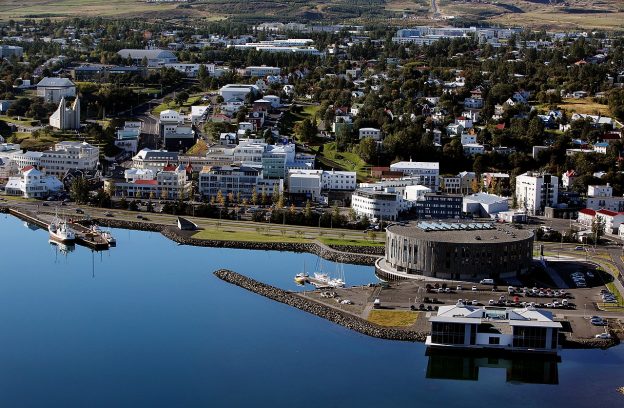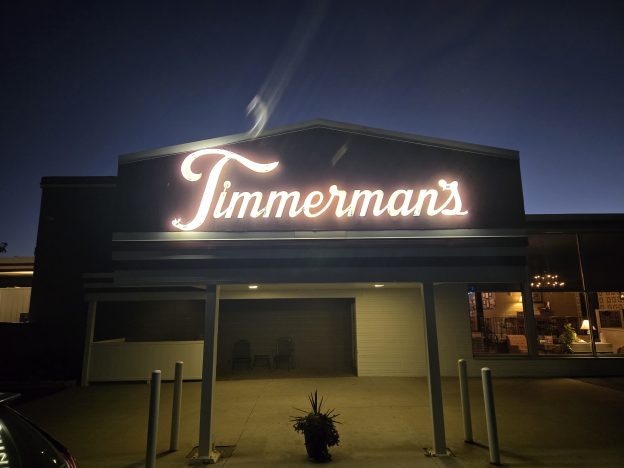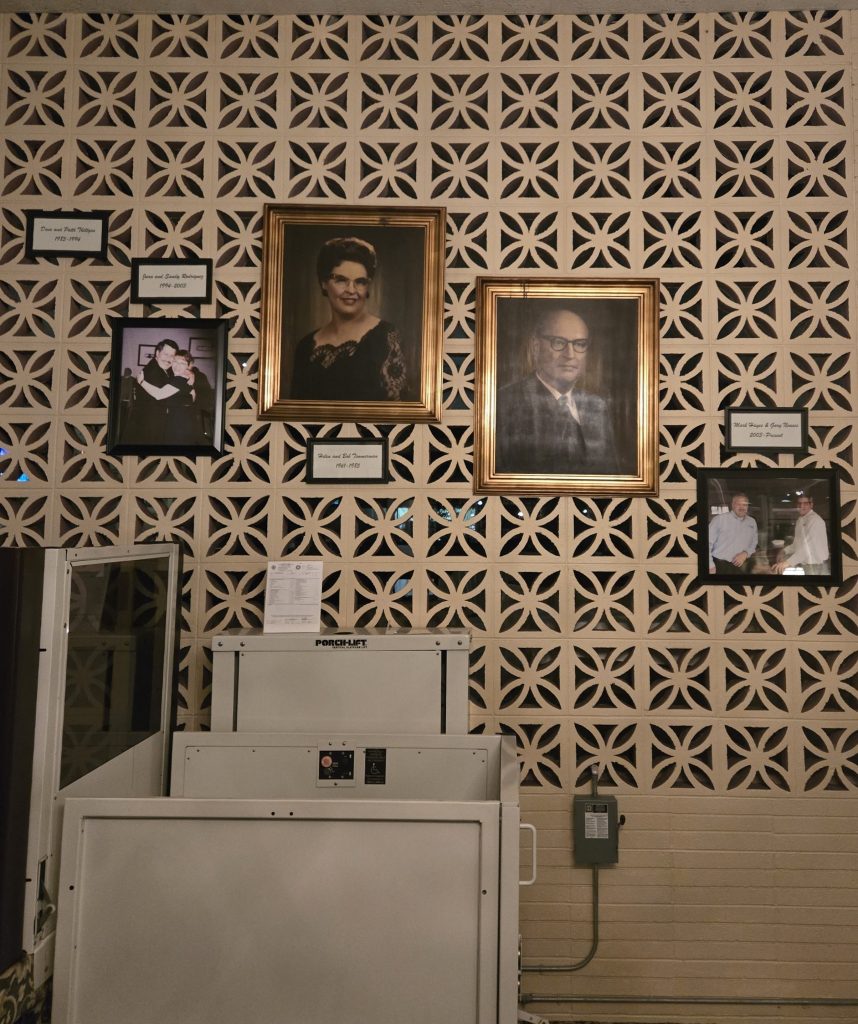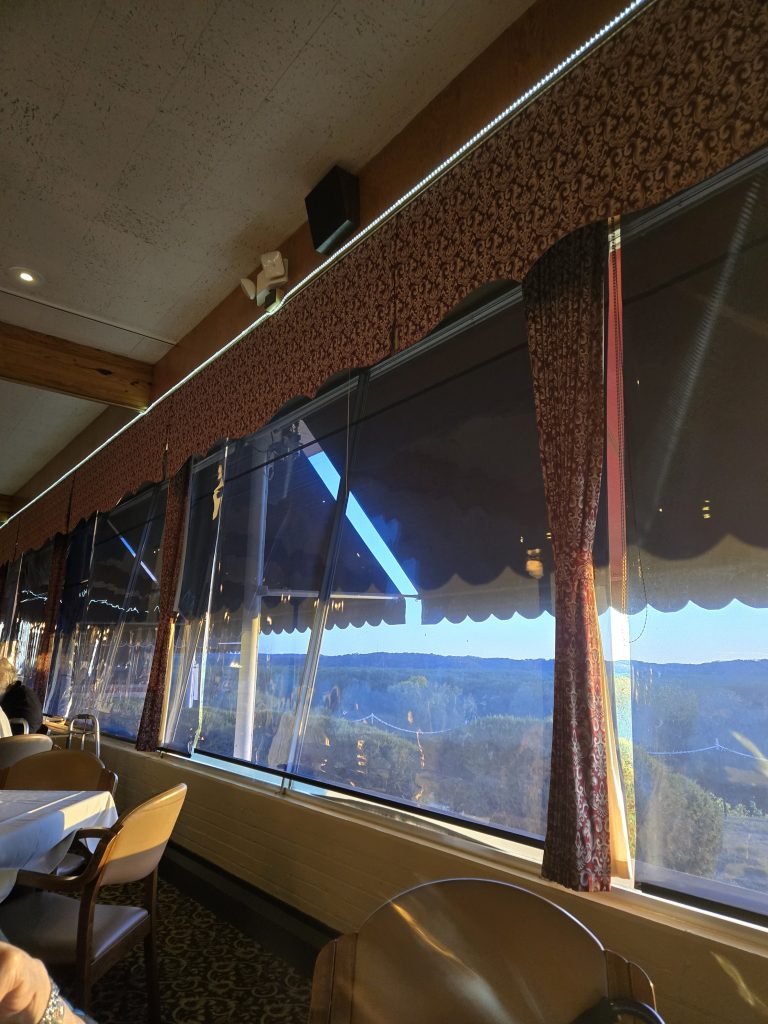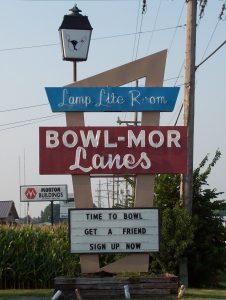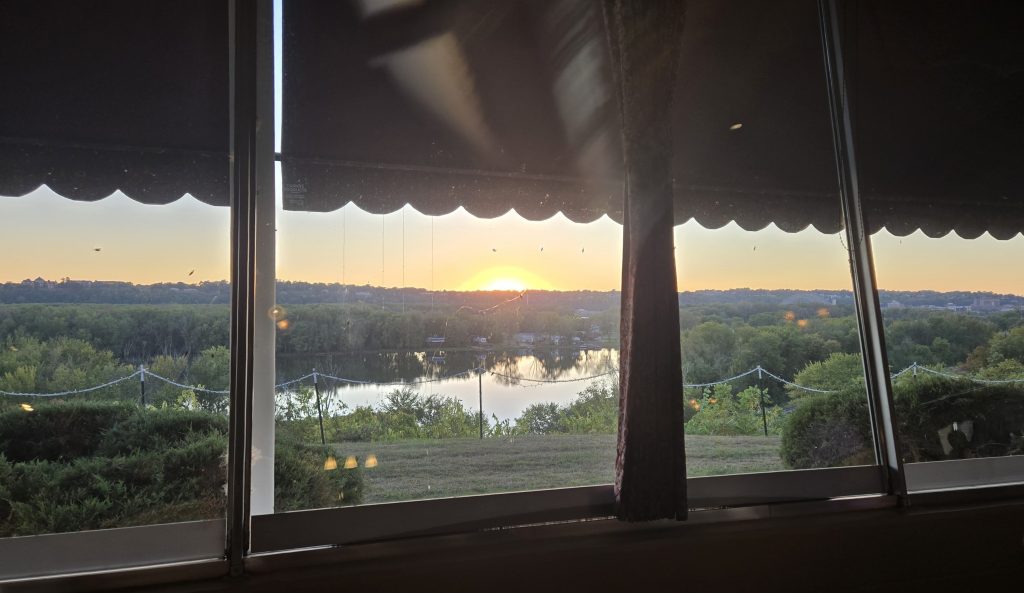Akureyri (English “ah-kuh-rair-ee”; Icelandic “ah-kyr-ey-ri”) is one destination I really want to spend more time in if/when we return to Iceland! Nicknamed “The Capital of the North”, it is the second largest town in Iceland with a population of around 20,000. Akureyriis 90km/54mi from the Arctic Circle and sits at the head of Iceland’s longest fjord, Eyjafjörður, which stretches 60 km/36 mi to the Greenland Sea.
Akureyri was founded in the 9th century by Helgi Eyvindarson, who was born in Dublin but was put into foster care in the Hebrides. When his parents reclaimed him two years later, he was so emaciated that they nicknamed him magri (The Lean). Helgi was a peaceful man and granted land to several families who settled in the area. That peace ended a couple of hundred years later when the Sturlungar clan, at the behest of Hakkon IV, then King of Norway, stirred up trouble in 1220 while attempting to bring Iceland under Norwegian rule. The conflict ended in 1264 when both sides kissed and made up.
In the mid-1500s Danish merchants used Akureyri as a trading post and warehouse, returning to Denmark during the winter. People started settling there permanently in 1778. The Danes introduced the locals to agriculture in the 1800s and the town started to grow substantially in 1862. Fishing, fish processing and farming became the main industries.
World War II dragged Akureyri into the 20th century after Britain, Canada and the US “preemptively” invaded Iceland to keep the Germans out which, understandably, did not sit well with the residents. The Allies based the Norwegian-British 330 squadron in Akureyri. (The British built bases in Reykjavik and near Selfoss; the Americans built Naval Air Station Keflavik, part of which is now Keflavik International Airport.)
Today Akureyri’s main economic sources are fishing (Samherji hf, Brim hf), higher education (The University of Akureyri-founded 1987), the Einstök Ölgerð brewery, and tourism. Akureyrarflugvöllur is an international airport serving destinations in the rest of Europe as well as regional flights from Reykjavik.
We disembarked and boarded our bus after another delightful breakfast courtesy of Viking Mars room service. Our tour guide today was a very personable young woman from Poland. The first thing she pointed out after we left the dock area was the heart-shaped red traffic light. They were put up to give people a sense of community and hope after the island’s banking system collapsed in 2008, decimating the Icelandic economy. On the bright side, Iceland sentenced its bankers to a combined 96 years in prison instead of bailing them out.
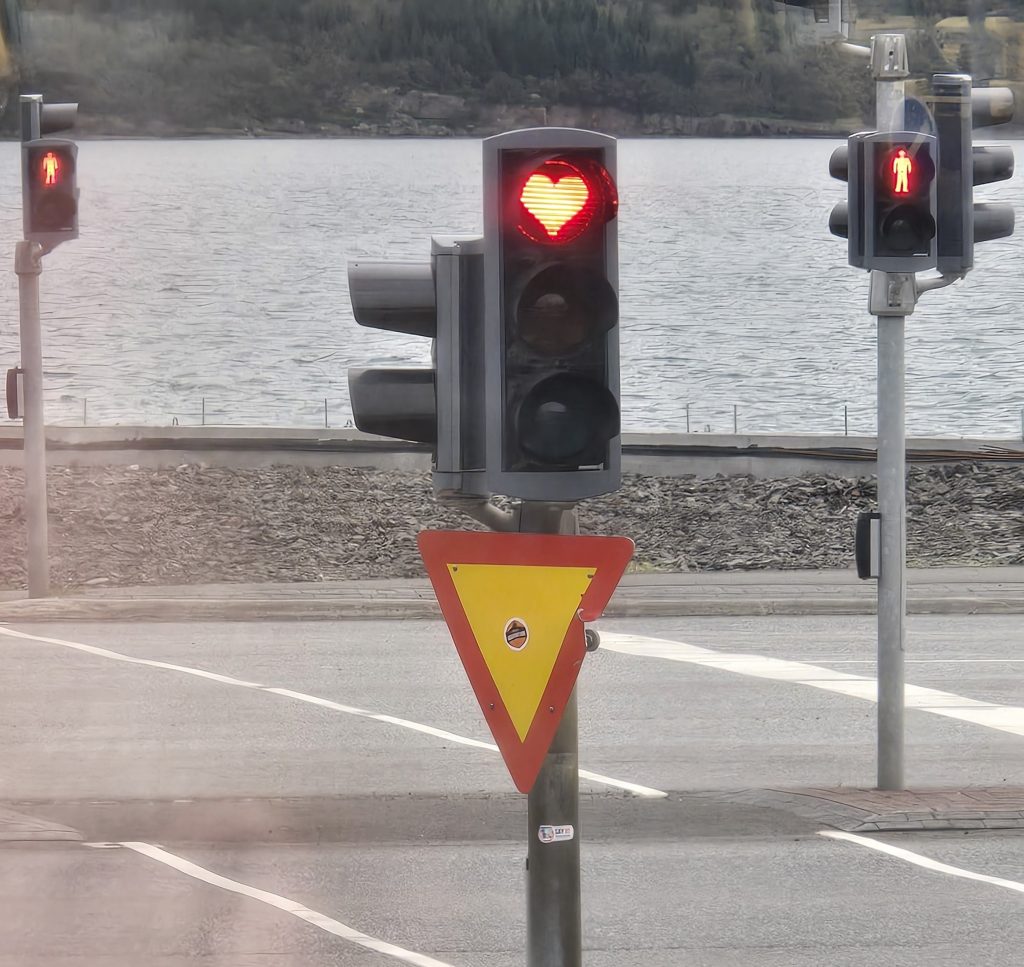
We took the main road out of the commercial district and turned on to a street running through a residential area with charming houses on our way to the local ski resort. (WordPress can’t accommodate the video I shot but you can view it here on Google Photos.)
This is Skautahöllin Akureyri, run by the Skating Club of Akureyri. It is open to the public and hosts the SA Víkingar hockey games, figure skating shows and curling championships. Ya gotta have something to do during those long winters.
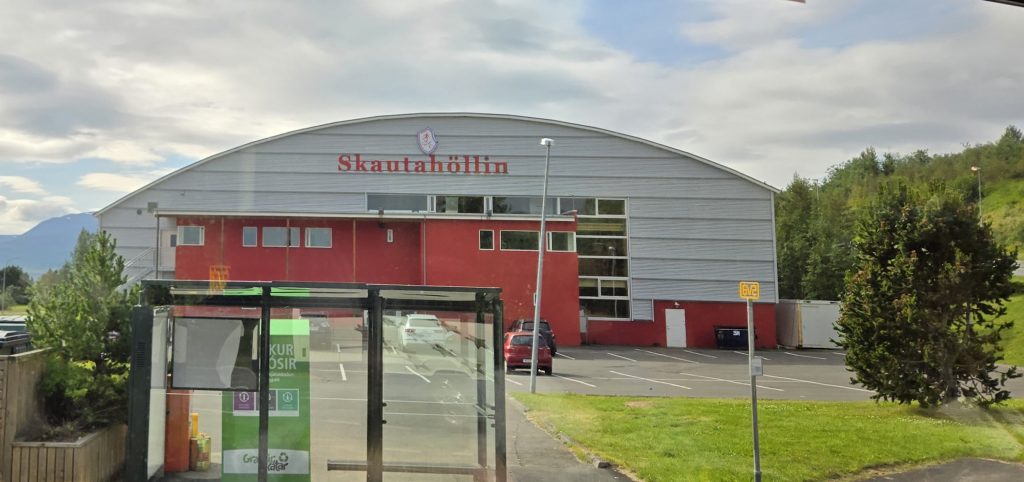
From here the road made a gradual incline to Mt. Hlíðarfjall Ski Centre which looks rather bleak with no snow. Check out the current conditions with their webcams.
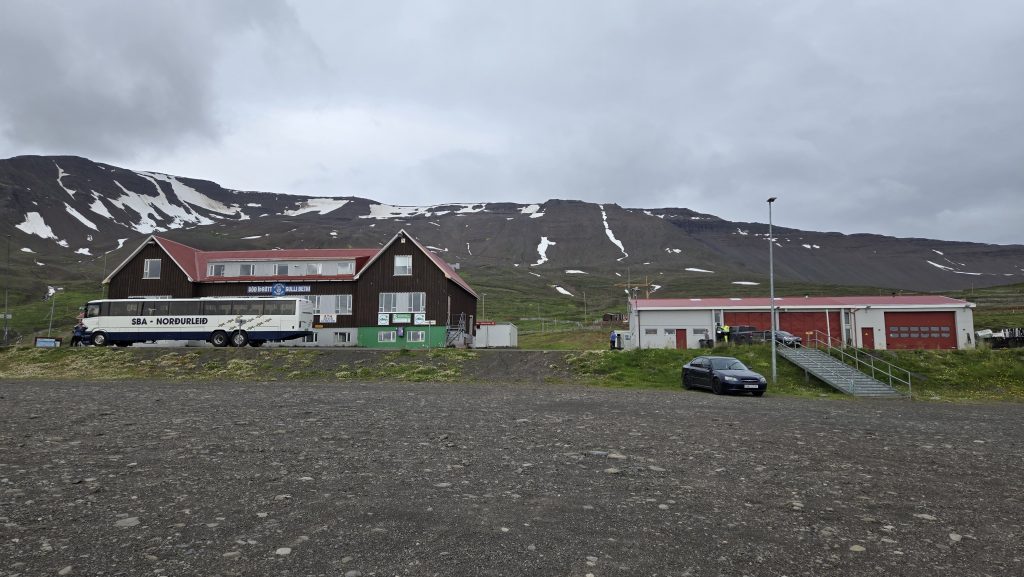
We had a great view of our ship in the harbor.
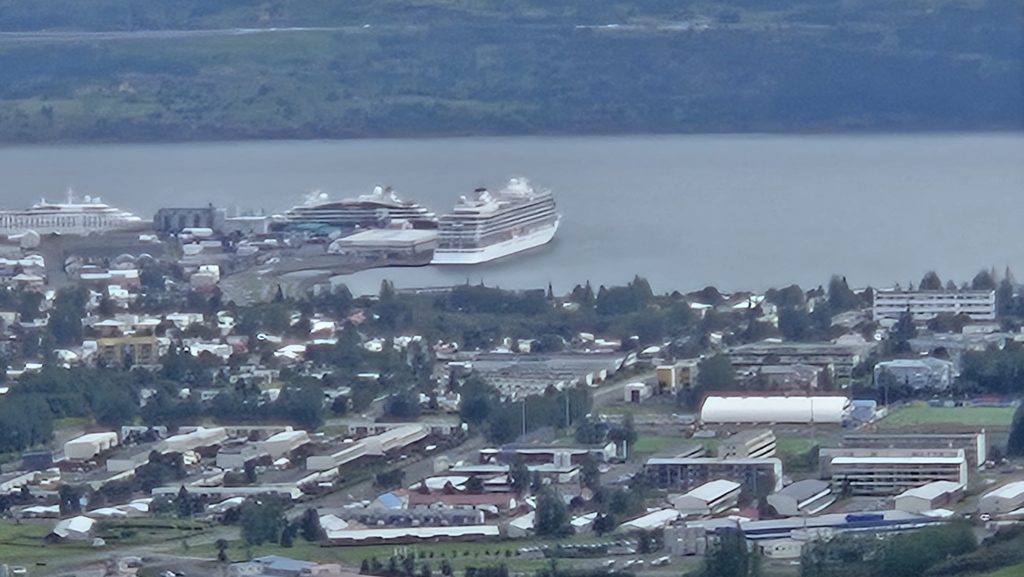
I commend the person or persons who took the time to look up all the distances to ski resorts around the world from here.
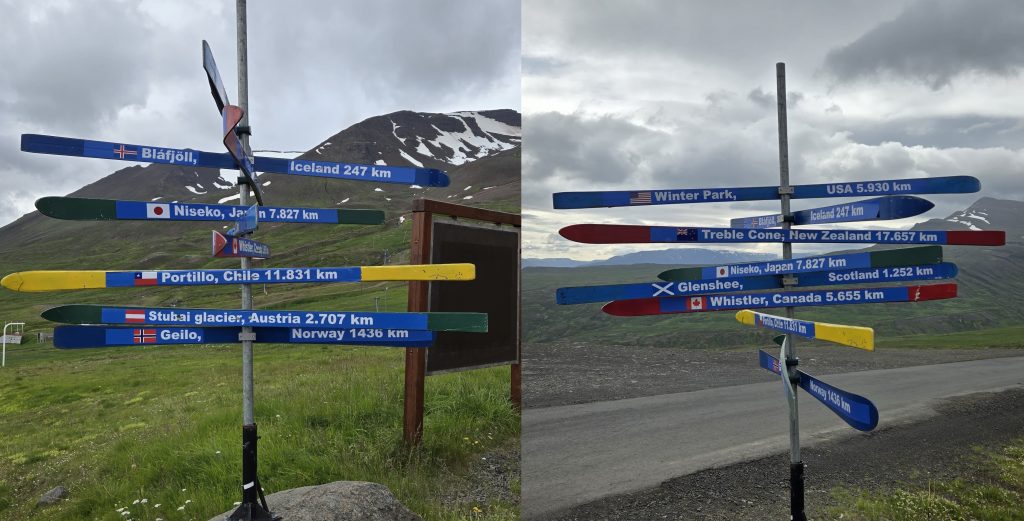
The bus took us back down the mountain to town, where we stopped at the Akureyri Botanic Garden. Founded in 1912 by the all-woman Akureyri Park Society, it began as a recreation area and attraction for the town and was the first public park in Iceland. The municipality of Akureyri took over and started the Botanic Garden in 1957.
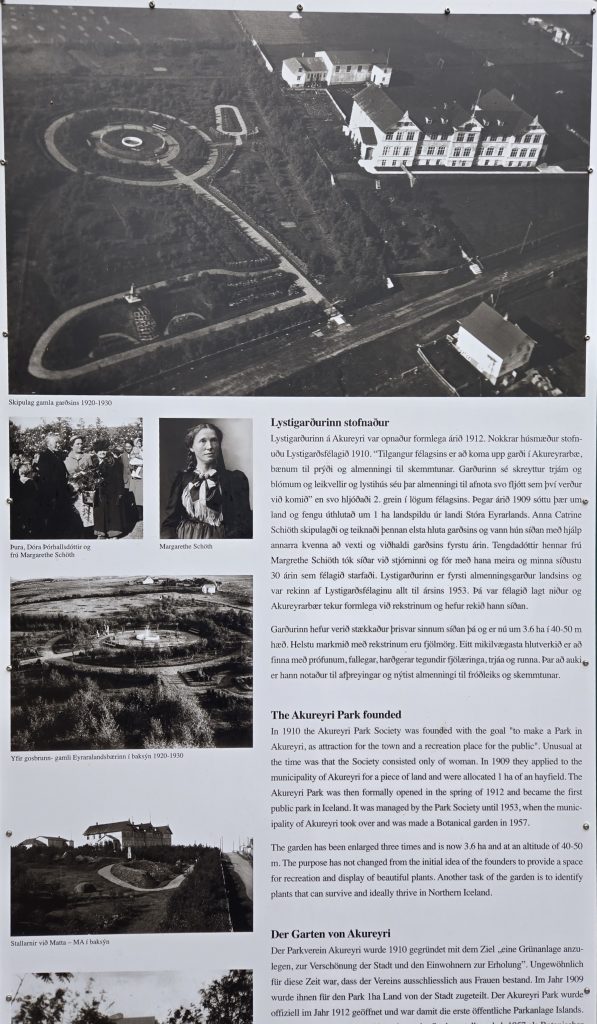
Many of the plants are Arctic or Alpine, native to Iceland, but there are several thousand other plant species.
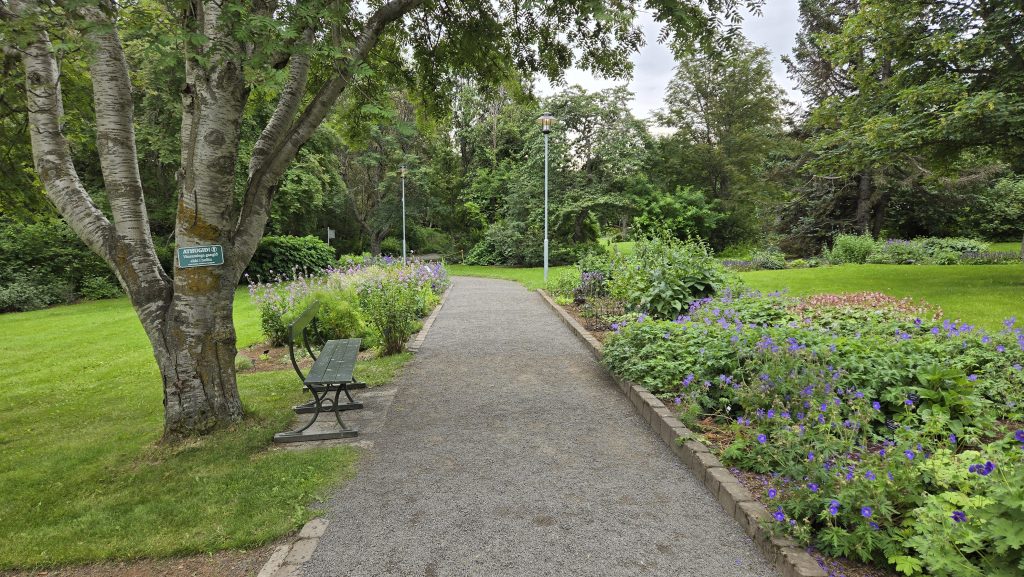

We took far too many pictures to fit in this blog; you can view all of them here.
Peg had difficulty navigating the gravel pathway, and I got tired of walking, so, predictably, I stopped here at LYST coffee shop to enjoy a cappuccino and people-watching.
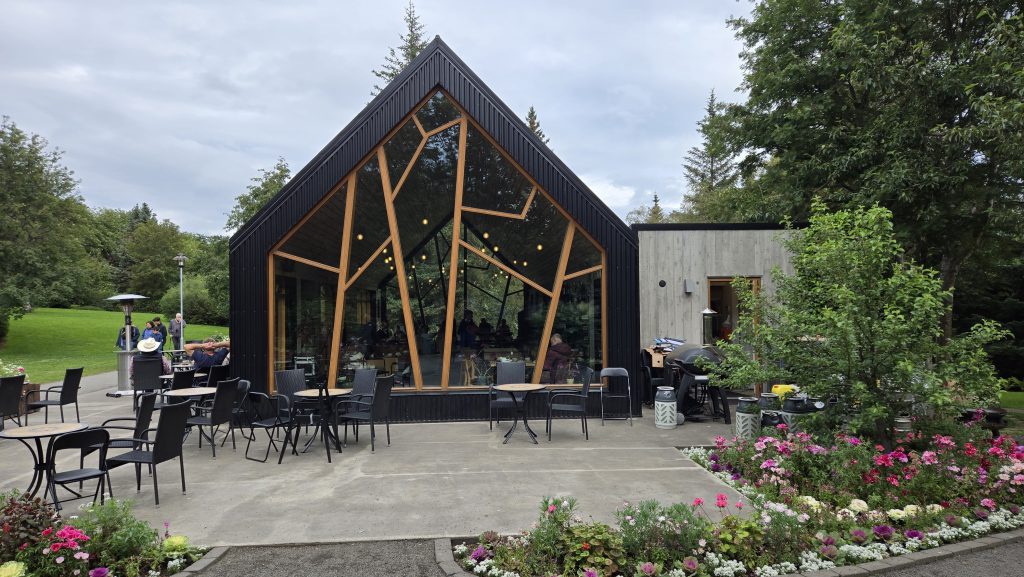
We left the Botanic Garden and drove by an amazing site, at least for Americans living in colder climates. The air temperature was about 58°F/14°C but there were many people swimming in the outdoor Akureyri Thermal Pool, which has indoor and outdoor pools, hot tubs and a cold bath, waterslides, and areas for sunbathing, all heated geothermally. Our guide explained that Iceland encourages physical activity for all and the island has the highest percentage of people engaging in exercise in all of Europe. Even the smaller towns in the country have community pools
The bus continued to the harbor, passing Akureyri’s landmark Lutheran church, Akureyrarkirkja. Built in 1940, it was designed by Guðjón Samúelsson, the architect who created Reykjavík’s majestic Hallgrímskirkja, and has a 3200-pipe organ, a floating crucifix, and a ship suspended from the ceiling, paying homage to an old Nordic tradition of votive offerings to protect those at sea. This link takes you to the church website.
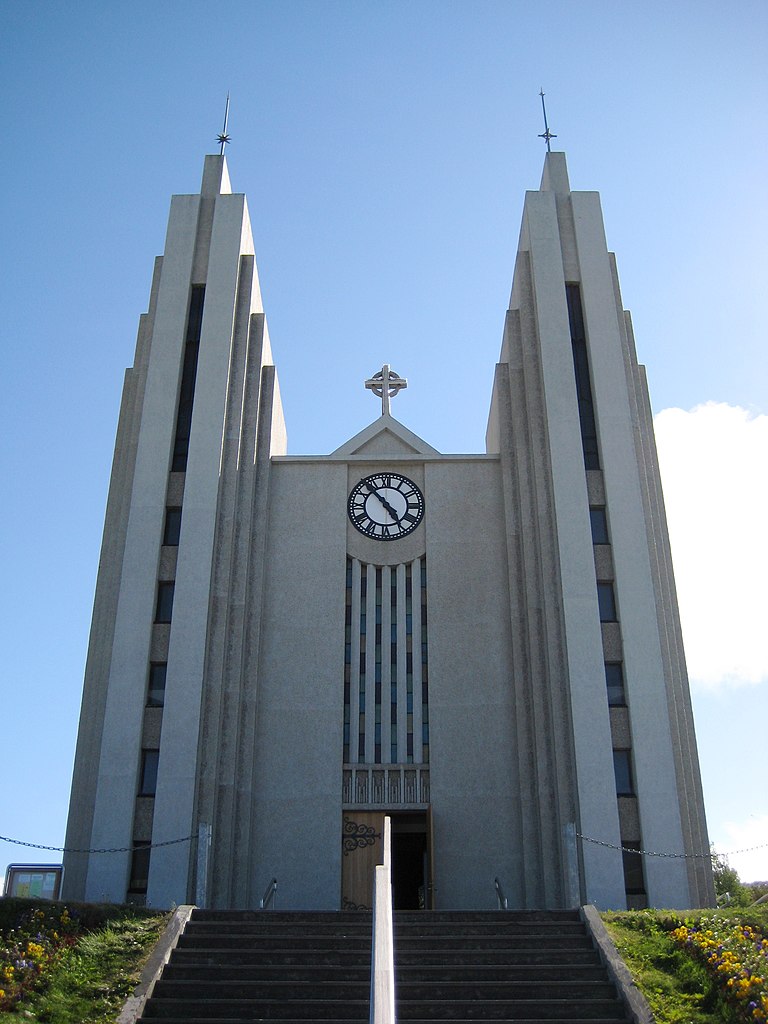
Photo from Wikimedia Commons by Biekko. Licensed under CC BY-SA 3.0
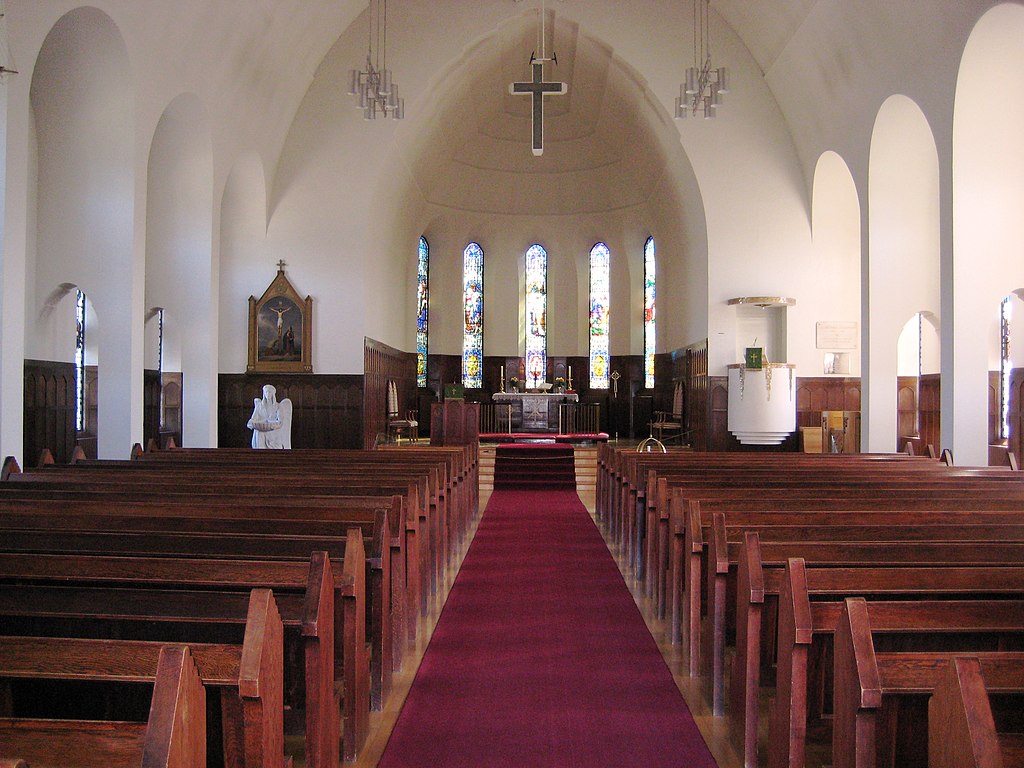
Photo from Wikimedia Commons by Biekko. Licensed under CC BY-SA 3.0
The last point of interest was Hafnarstræti, Akureyri’s shopping district featuring stores, restaurants, bars and lodging. If you’re young and looking for a bargain, you can stay in a capsule sleeping pod at Hafnarstræti Hostel for about $60/night. Hey, Booking.com gives it a 9.4, so it can’t be bad!
We stopped at the port gift shop before reboarding the ship. Peg checked out the Icelandic wool sweaters which are beautiful but very rough. I picked up a couple of sausages which I discovered were made from leftover pork parts when I translated labels! Peg got chocolate bars and hard candy for the family, along with this figurine. Leppalúði (“lep-u-loo-ti”) is “the lazy husband” of Grýla (“Gree-la”) and the father of Iceland’s 13 Yule Lads , trolls who make their appearance nightly from December 12 until Christmas. (There is also a giant Christmas Yule Cat that eats children who haven’t gotten new clothes for the holiday!)
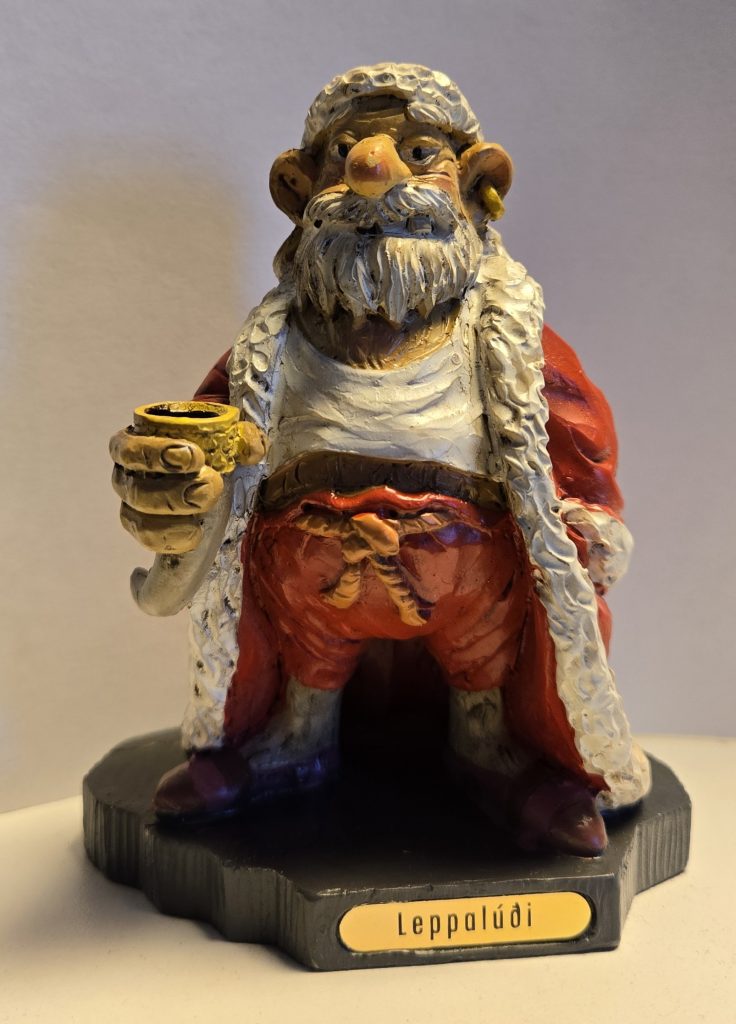
We were too late for lunch in the World Café when we returned and opted for the Pool Grill, just off the pool deck. One can get burgers, sandwiches or hot dogs and there’s a soup and salad bar. We opted for the famous Icelandic hot dogs which are longer than the standard American dog and made from lamb instead of beef or pork, but still tastes like a regular hot dog.
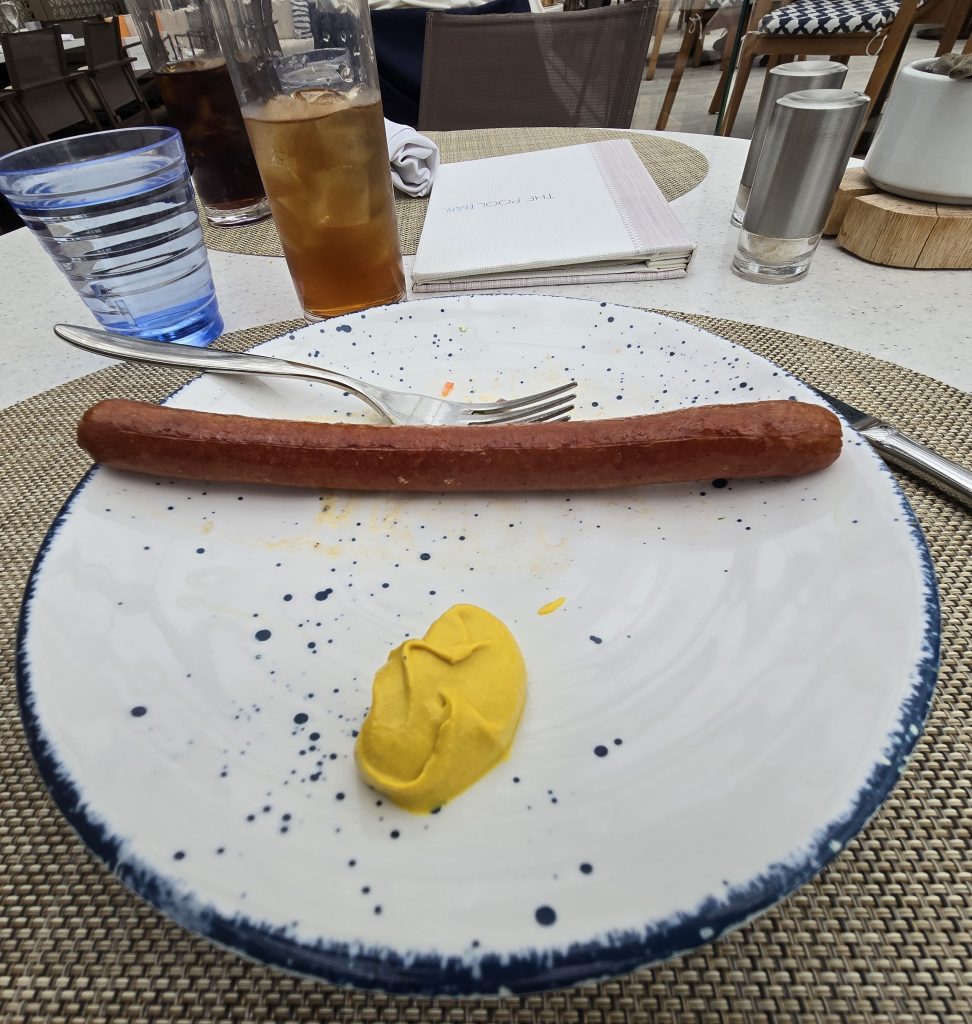
After lunch I headed for the Nordic Spa on Deck 1 at the front of the ship, down a hallway past the Living Room, passing a shop, a hair salon and a fitness center along one side of the hall. The opposite wall was done in a faux-birch paneling and there’s a built-in seating area across from a check-in station.
Peg had recommended I book a massage before our trip. I had signed up for a deep tissue massage, ignoring her sage advice to choose something more relaxing. I’ve had lower back pain for decades and really thought this would help. This Healthline article touts deep tissue massage as offering “both physical and psychological benefits. It can relieve muscle pain and stiffness and provide stress-relieving relaxation for the body and mind.” Silly me.
The young man at the desk took me to the men’s locker room. There is a long counter as one enters; large, fluffy grey bath towels and smaller hand towels sit in wall mounted shelves above it. A swimsuit water extractor/salad spinner was built into the near side, just opposite the door. A naked old guy was using the extractor, standing in front of the same door through which my female masseuse would enter several minutes later
The rest of the locker room was impressive, There were two showers and a restroom on the right and a bank of lockers on the left. Each open locker contains a three-quarter length white robe, a towel, and a basket with foam slippers. The user locks it with the ship keycard after closing the door; it can only be opened with the same keycard. (I suspect the staff can override the lock in an emergency.) A sauna and a “cold plunge;” a four-foot-deep pool of really cold water, were at the end!
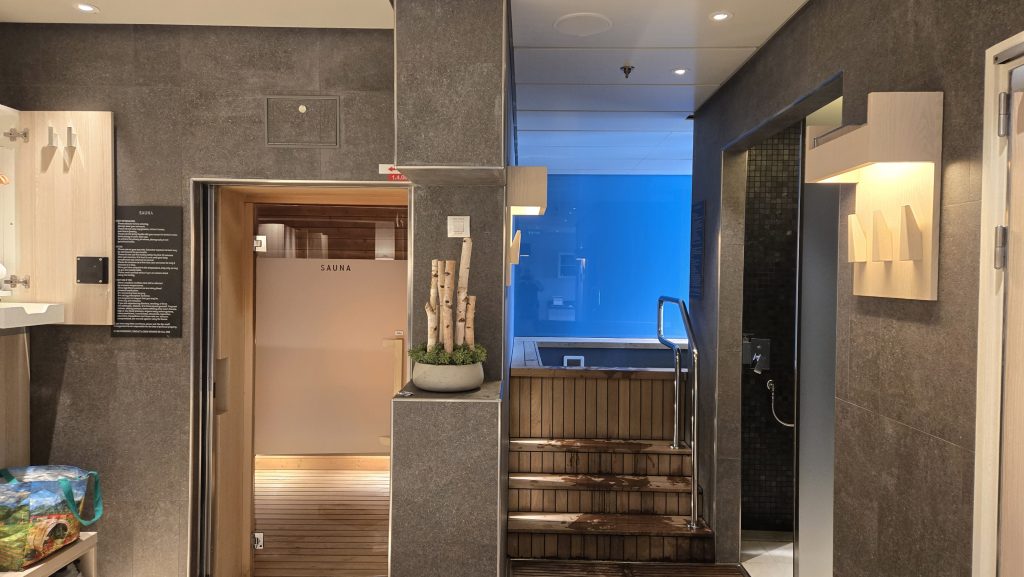
An L-shaped hallway led around the back to the main pool room, which featured a small “geothermal” hot tub sitting inside one corner of a larger pool. (I don’t know what made it geothermal since the water temperatures seemed to be the same.) There were several loungers on each side of the pools and in a larger area between the steam room and the “snow room” just opposite. One is supposed to enjoy the “refreshing” cold amidst gently falling snow, but all I saw was a pile of partly melted snow against the wall.
I sat in one of the chairs along the wall and listened to soothing music while contemplating nothing in particular until my masseuse , a tiny Indonesian woman, called me from the locker room door and led me to one of the massage rooms. There are few words to describe the ensuing thirty minutes except to say that by the end I felt like the suitcase manhandled by the gorilla in the memorable 1971 American Tourister commercial. Next time I will listen to Peg. (No, you won’t. You do whatever the hell you want!” )
After another delicious dinner we went to the Atrium on Deck 2, overlooking the Living room, and listened to the nightly flute/piano duo, then retreated to our stateroom where we listened to one of the port talks on Viking history (which is when I learned the origin of the Bluetooth symbol). We skipped the ABBA tribute later that evening in The Theatre, opting to open the celebratory bottle of champagne we’d been saving.
Follow these links for more information:
Akureyri, the Capital of North | Culture, History and Activities
The Ultimate Guide to Akureyri in Iceland
Featured Image: Downtown Akureyri seen from Vaðlaheiði. Skapti Hallgrímsson, 17 October 2020. This file is licensed under CC BY-SA 4.0 All other photos are mine except where noted.
